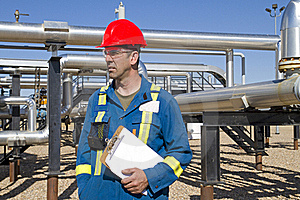Operating Procedures Development
 The development and use of Operating Procedures is an integral element of a successful safety management system, as it provides individuals with the information to perform a job safely and properly, captures operational best practices, and facilitates consistency in the operating environment. The development of Operating Procedures may also include protocols, instructions, checklists, safe work practices, etc. Risk Management Professionals develops Operating Procedures for a wide spectrum of facilities, ranging in complexity from water treatment to oil and gas processing. Our Team works closely with knowledgeable operating staff to develop procedures that accurately reflect the task requirements and meets applicable regulatory requirements.
The development and use of Operating Procedures is an integral element of a successful safety management system, as it provides individuals with the information to perform a job safely and properly, captures operational best practices, and facilitates consistency in the operating environment. The development of Operating Procedures may also include protocols, instructions, checklists, safe work practices, etc. Risk Management Professionals develops Operating Procedures for a wide spectrum of facilities, ranging in complexity from water treatment to oil and gas processing. Our Team works closely with knowledgeable operating staff to develop procedures that accurately reflect the task requirements and meets applicable regulatory requirements.
Writing Style
Risk Management Professionals develops Operating Procedures that are written in a concise, step-by-step, easy-to-read format that is unambiguous and not overly complicated. Terminology is consistent with operations and Piping and Instrumentation Diagrams (P&IDs); however, jargon is avoided to maintain clarity.
Operator Interviews & Shadowing
A critical element for developing usable and accurate Operating Procedures is to involve facility operators at an early stage of the project. Risk Management Professionals conducts operator interviews, as well as operator “shadowing” at the facility to document the step-by-step procedures. At the client’s option, an informal video is utilized to document the interview process and ensure a reference is provided while writing the procedures out of the field. Additionally, photographs are utilized as part of the shadowing process, and relevant critical photographs are included in the Operating Procedures to provide clarity and operational references.
Operating Parameters & Limits
A key component to developing Operating Procedures is to document the normal operating parameters for each piece of equipment referenced in the Operating Procedures, including level, temperature, pressure, flow, and other process parameters. For example, if there is a procedural step to “check the level of the Water Tank (TK-1)”, there is also a reference to the normal operating level of the tank. Additionally, a table listing the operating limits outlines the safe upper and lower operating limits for the operating parameters and clearly indicates what is outside the acceptable operating range. The consequences associated with deviating from the acceptable operating limits are also clearly defined, as well as the steps required to correct or avoid deviations.
Safety and Health Considerations
To ensure the Operating Procedures include necessary safety and health precautions, the following are defined within the Operating Procedures:
- Properties and hazards of the chemicals used in the process
- Precautions to prevent exposure (e.g., engineering controls, administrative controls, and personal protective equipment
- Response in case of physical/airborne exposure

